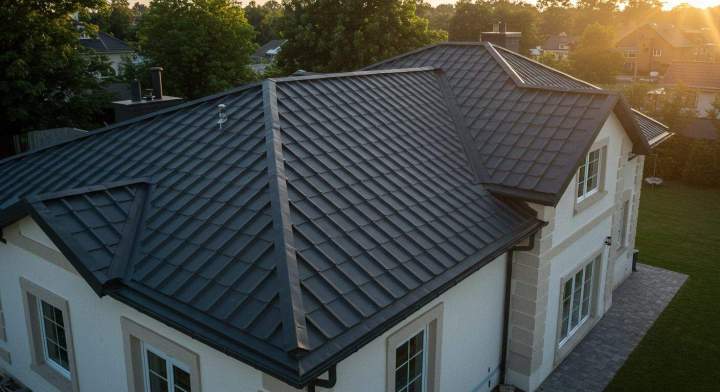New Roof: The Complete Guide to Sustainable Investment
New Roof Linkeo / May 21, 2025

Understanding Sustainable Roofing
Sustainable roofing refers to the use of eco-friendly materials and practices in the construction and installation of roofs. These roofs are designed to minimize environmental impact, enhance energy efficiency, and promote a sustainable lifestyle. The growing awareness of climate change and resource scarcity has made sustainable roofing an attractive option for homeowners and commercial property owners alike.
Key Benefits of Sustainable Roofing
1. Sustainable roofs often feature materials that enhance insulation, thereby reducing heating and cooling costs.
2. Many eco-friendly roofing materials are designed to withstand harsher weather conditions, which can extend the lifespan of your roof.
3. By opting for sustainable materials and practices, you can significantly lower your carbon footprint.
4. Sustainability is becoming a selling point for many buyers, making your property more attractive in the real estate market.
Types of Sustainable Roofing Materials
Metal Roofing
Metal roofs are gaining popularity due to their longevity and recyclability. Made from materials like aluminum and steel, they can reflect solar heat, reducing energy costs. Additionally, many metal roofs can be made from recycled materials, making them an environmentally friendly choice.
Green Roofs
Green roofs, or living roofs, incorporate vegetation into the roofing system, providing insulation and reducing stormwater runoff. These roofs not only filter air pollutants but also offer aesthetic appeal. While they require more maintenance than traditional roofing, the ecological benefits can make them a worthwhile investment.
Slate and Tile Roofing
Natural slate and clay tiles are both durable and sustainable options. They have a long lifespan and can be recycled at the end of their life cycle. These materials also offer excellent insulation properties, which can help balance indoor temperatures.
Solar Roofing
Integrating solar panels into your roofing system can turn your roof into a power generator. Solar shingles are a newer option that combines the aesthetics of traditional roofing with the functionality of solar energy. Investing in solar roofing not only reduces energy bills but can also provide tax incentives and rebates.
The Installation Process
Engaging Professionals
When investing in a new sustainable roof, it's crucial to engage professionals who specialize in eco-friendly roofing solutions. Research local contractors with experience in sustainable practices to ensure your investment is handled correctly.
Permitting and Regulations
Before beginning the installation, check local building codes and regulations. Some areas may have specific guidelines for sustainable roofing systems, especially for green roofs and solar installations.
Cost Considerations
While sustainable roofing can be more expensive upfront, consider it a long-term investment. The energy savings, reduced maintenance costs, and potential tax incentives can offset the initial expenditures over time.
Maintenance and Longevity
Regular Inspections
Sustainable roofs require periodic maintenance to ensure their longevity and efficiency. Regular inspections can help identify issues early, preventing costly repairs down the line.
Cleaning and Upkeep
Different materials require different maintenance approaches. For instance, green roofs may need more frequent attention to the plants, while metal roofs may require less upkeep. Understanding the specific needs of your chosen material is essential for maximizing its lifespan.
Evaluating Return on Investment (ROI)
Energy Savings
Sustainable roofs can lead to significant reductions in energy bills. Analyze your energy consumption before and after installation to gauge savings. Many homeowners report up to a 30% decrease in energy costs.
Property Value Increase
Research suggests that homes with sustainable features can sell for more than comparable properties without these features. This increase can be attributed to the growing demand for eco-friendly homes.
Environmental Impact
Investing in a sustainable roof not only benefits your wallet but also contributes positively to the environment. By reducing energy consumption and lowering carbon emissions, you play a part in the global effort to combat climate change.
Choosing a sustainable roof is an investment in your home’s future and the environment. It brings long-term savings through energy efficiency and durability. With the right knowledge, you can make a smart, eco-friendly roofing decision.